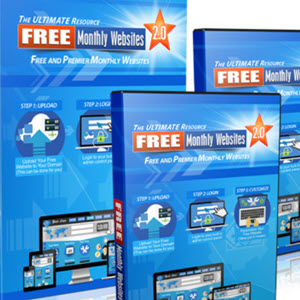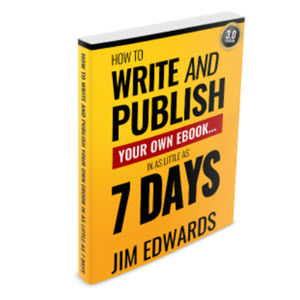How to Design the Perfect Landing Page for your Website
They may have been around since the dawn of the Internet, but landing pages are still an excellent way to target marketing materials to the right people. Even more importantly, landing pages are one of the best methods of creating beneficial communications with potential customers. Of course, no one is going to interact with your company if your landing page is badly designed, in fact you may find you lose customers.
A landing page that was created with very little thought can come across as untrustworthy, which will reflect upon the rest of your website and ultimately turn people off your business. Putting some consideration and thought into your landing page is the best way of securing leads, and designing the one for your website can be easy if you know what to include, and, more importantly, what to leave out. Over designing can be just as detrimental as bad design. With landing pages it is very much a case of less is more.
Headings
Headings are extremely important when thinking about landing page design. They should be the first thing your eye is drawn to. The main heading that informs customers of what you are offering is called a headline.
The colour and typeface you choose for your headline should set the tone for the page. Do not select bright garish colours that will overpower the rest of the content. It is the size and the positioning on the page that will cause the headline to grab your attention. Consider using a muted tone, a few shades darker than your background, and ensure the typeface is easy to read. Remember you shouldn’t be focusing on ground-breaking design, a simple sans serif font will work far better than a delicate script.
Layout
Landing pages all tend to flow in the same way – a bold headline at the top with a sub-header presenting the offer in more detail. Some descriptive copy then follows this. Bellow is the all-important call to action and form. An urgency statement and some testimonials will carry on from this.
You will find that most landing pages have the same layout. Don’t look at a landing page as your opportunity to stand out from the crowd. This sequence has been tried and tested and it has proved to be the most effective way to secure the best customer interaction.
Copy
Having already looked at headings, we will move on to the next aspect of the sequence; descriptive copy. This should be kept short. Bullet points are probably the most effective way to do this. Space them out allowing for lots of white space around them. Giving potential customers only the key information will let your product speak for itself.
Call To Action
Apart from the heading, your call to action (CTA) is the most important aspect of a landing page. It is the last convincing factor that will get people to sign up to your newsletter or download your free eBook, so make it stand out. Make the CTA bolder and slightly larger than the main body of text. You could consider using a colour that contrasts from your background. Unlike the header, your viewer will usually have to scroll down the page to see the call to action, therefore it will need to jump out at them.
The Form
The form itself will need to be kept as short and simple as possible. If it is unlikely you will be contacting your customers by phone, don’t include a box asking for their numbers. Asking for lots of information may be beneficial to you but it is more likely to scare customers off.
If you require a lot of information from your clients, consider splitting your form into two columns, this gives the illusion of a shorter form. You will soon find potential customers are more at ease giving away less information.
Buttons
At the end of the form you will need a button for viewers to click to send you the information. Avoid using words like “submit” to mark this button. No one wants to submit his or her information. “Send” is a far less intimidating word to use. If your call to action is specific you could use phrases such as “sign up to newsletter” or “Download free eBook”.
Like the call to action, these buttons will need to stand out. Contrasting colours will ensure that your customer’s eye is drawn to the “Send” button, which in turn reinforces the CTA.
Images
It is always good practise to break up areas of text with an image. Pick one that visually represents the product or offer you are promoting. Stock images should be avoided in circumstances like these. If the viewer has seen them before (and indeed the chances of which are quite high) then the entire form can be seen as untrustworthy.
Wherever possible use photographs. If you are promoting a new product for which customers will get a discount if they fill in your form, then show an image of that product. If your call to action is more general, such as signing up for a conference, you will have to think more abstractly. If you are unable to find a suitable image, break the text up with branding, or replace the bullet points with interesting icons.
Testimonials
Testimonials are a great way of reinforcing an impression of trustworthiness. If others have signed up to your form, future individuals will feel more comfortable in also doing so.
The text of these testimonials should be short, no more than a few lines long, and should be sat next to an image. A photograph of the individual would be ideal, but if this is not possible an icon that emphasises the testimonial’s content will also work.
Include no more than 3 testimonials, too many will put the viewer off reading them. Position them side-by-side so the information can be read whilst the “Send” button is still in view.
And Finally…
Landing page design is all about presenting information in a clear and concise way. Don’t include any text or images that may distract a viewer from the purpose of the page. All information and imagery should be gently guiding them to the same point on your landing page – the “Send” button. Utilise white space, as this allows your product or service to speak for itself, and shows you have no hidden agenda. A cluttered page will only confuse the viewer and result in page bounces.
It is important to consider how people are viewing your landing page. Not everyone will be using a desktop. Even the most efficiently designed landing page can look cluttered when shrunk down to fit the smartphone screen. To find out how to optimise your landing page design for handheld devices, check out part 2 in this series – How To Design The Perfect Landing Page For Mobile.
Continue reading here: 20 Great Ways To Drive Traffic To Your Blog
Was this article helpful?


